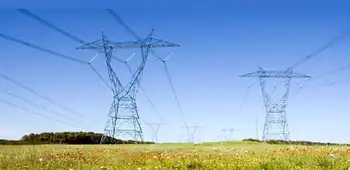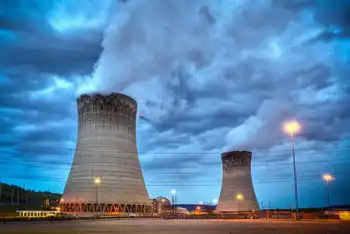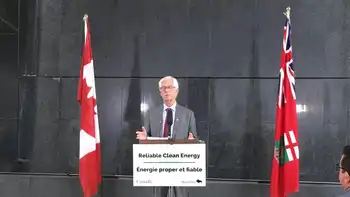China snow crisis shows vulnerability
By Associated Press
NFPA 70b Training - Electrical Maintenance
Our customized live online or in‑person group training can be delivered to your staff at your location.

- Live Online
- 12 hours Instructor-led
- Group Training Available
Snow and ice storms in east, central and southern China — at no more than a foot of snow overall in some places — have overloaded businesses, the electricity grid and other systems that normally keep the economy ticking at double-digit rates. The weather was unusual for those regions, and they were ill-equipped to handle it.
China's already overburdened railways, coupled with an incomplete road system, buckled under the added pressure as tens of millions of Chinese were on the move for the Lunar New Year — one of the world's biggest annual mass movements of humanity.
Before the storms, railway officials estimated a record 178.6 million people — more than the population of Russia — would travel by train for the holiday, which begins Feb. 7.
The complications illustrate the limitations China faces, despite 30 years of economic reforms that have turned it into an export juggernaut, with economic growth forecast at more than 10 percent this year.
China's antiquated and inefficient power grid, which is powered largely by coal, ground to a near halt, plunging many cities into darkness.
Dozens of factories were closed, with mining and metals companies suffering from severe power shortages. The storms have caused economic losses of $3 billion since they began Jan. 10, the Civil Affairs Ministry said.
Meanwhile, the China Meteorological Administration said the bad weather, including more snow, would continue for at least the next three days in parts of eastern and southern China.
China's leaders, who held an emergency meeting, deployed more than 450,000 army troops and extra units of police to clear roads and help provide emergency supplies to the millions of travelers stranded by the weather, state-run media reported, saying authorities had declared an "all out war" on the crisis.
James Sung of the City University of Hong Kong said top leaders were slow to respond to the massive travel holdup and that the crisis exposed the country's faulty infrastructure.
"The central government underestimated the impact of the snow. They probably thought if they could do a good job providing electricity and rail services after the snow, after a few days of chaos, they would be OK. They didn't think it would be this bad," Sung said.
The worst-hit by the transportation woes were migrant workers trying to leave booming southern Guangdong province — often called the world's factory floor because it makes everything from Honda sedans to Apple iPods and Nike sneakers.
The official Southern Daily newspaper in the Guangdong capital of Guangzhou said that so far 470,000 people had given up hope of getting home now and had got refunds for their tickets. It said 200,000 were still spread out in temporary shelters away from the main Guangzhou station.
In China, the New Year holiday is as important as Christmas is in the West. For most migrant workers, it's the only time of the year when they can visit their hometowns. Many laborers were ignoring the government's pleas to scuttle their plans to return home.
Sung said the government should be wary of fallout among ordinary workers who couldn't go home.
"The risk of a bigger crisis in the short run is low, but some level of grievances has been accumulated. We'll have to see how the government comforts the stranded tourists. It's a tough task," Sung said.
In Guangzhou, fights broke out among travelers seeking to board buses to the train station. Police intervened in at least one case as passengers clawed their way onto a bus not even headed to the station.
For the second straight day, Premier Wen Jiabao visited affected regions Wednesday to display high-level government and Communist Party concern. "This has been very hard on everyone," Wen said to some of the hundreds of thousands who have been sleeping outdoors while waiting to board trains.
"Currently all levels of government are working on getting electricity restored. After that, transport will resume," he told the crowd in Guangzhou, according to the Web site of the Yancheng Evening News.
Factory worker Hong Qiyuan was among the tens of thousands of travelers staying in a temporary shelter at a convention center in the city. Gripping a small blue suitcase, the 31-year-old man stood outside the building with an orange plastic bag on his head to protect himself from a driving rain.
"I think you can say that the government is doing an OK job. What can you do? It's the weather," said Hong, whose hometown in Hunan was seven hours away by train.
Another worker, He Mingtong, 48, said much of the delays could have been avoided.
"If this happened in America, it would have been cleared up much faster," said He while standing under a pedestrian bridge with five co-workers from a fabric factory outside Guangzhou. "America has the equipment, the trucks, to clear away the snow. But we haven't had snowfall like this for 30 years or more, so we were unprepared."











